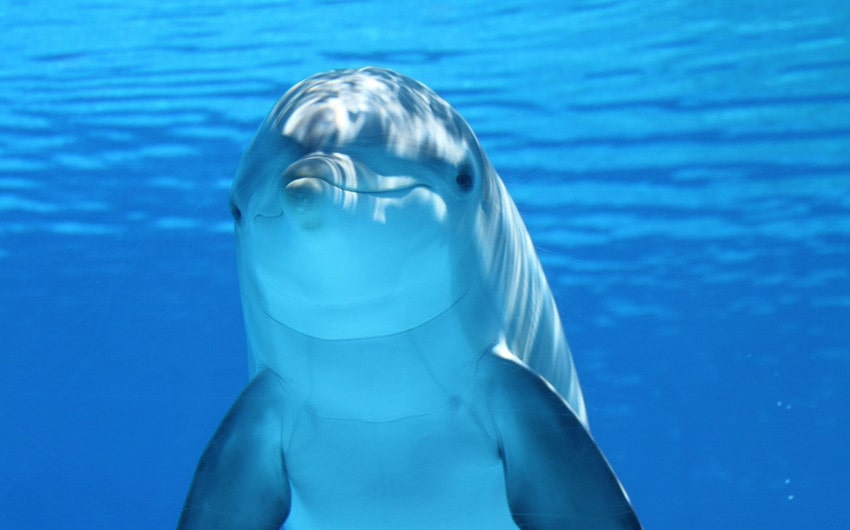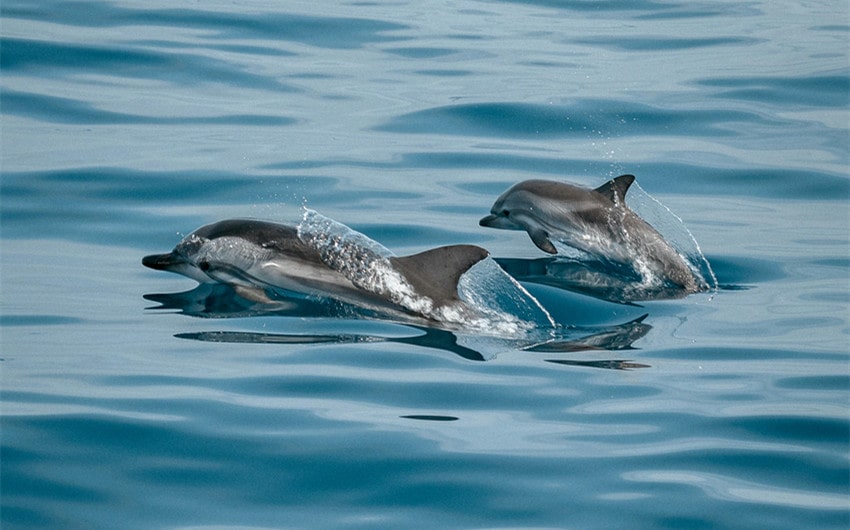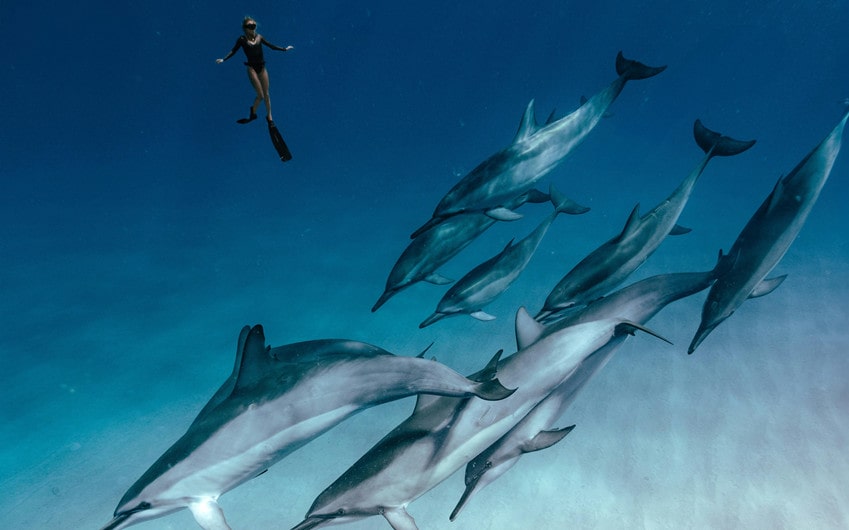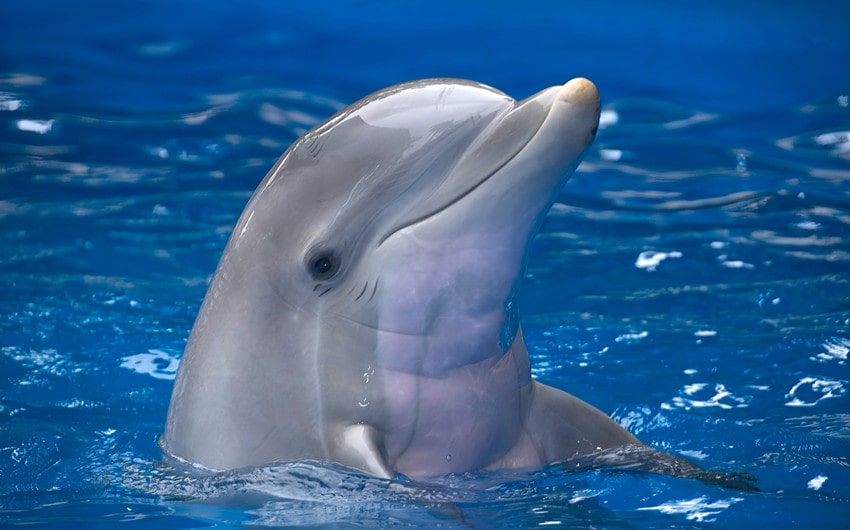Are Dolphins Dangerous or Just Playful? What You Should Know
Dolphins are often seen as friendly, playful creatures, captivating us with their intelligence and charm. From movies to marine shows, they’ve earned a reputation as the ocean’s friendliest mammals.
But when we get up close, we might wonder, are dolphins dangerous? The simple answer is that while they are not typically a threat, dolphins are still wild animals capable of unpredictable behavior. By understanding their actions and respecting their space, we can enjoy safe and meaningful interactions with these fascinating marine creatures. Let’s dive into the facts.
The Friendly Reputation of Dolphins

Dolphins have earned a reputation as some of the ocean’s most endearing and intelligent creatures. Known for their playful leaps and curious nature, they have a unique ability to captivate human hearts. Their apparent “smiles” and friendly demeanor make them seem approachable, and countless stories of dolphins rescuing swimmers or guiding boats have reinforced the belief that they are protectors of the sea.
In popular culture, dolphins are celebrated as gentle, intelligent beings. From the beloved TV show Flipper to their starring roles in marine park performances, dolphins are often depicted as symbols of joy and connection. Their ability to learn tricks, communicate with humans, and display complex behaviors adds to their charm.
In the wild, dolphins frequently interact with humans, swimming alongside boats or riding the waves they create. These moments of interaction feel magical and give the impression that dolphins are naturally friendly toward people.
While these traits are undeniably fascinating, it’s important to remember that dolphins are still wild animals with their own instincts and boundaries. Appreciating their intelligence and respecting their space is key to enjoying safe and meaningful encounters.
Are Dolphins Dangerous? Potentially Dangerous Behaviors of Dolphins

Despite their friendly reputation, dolphins are wild animals with natural behaviors that can sometimes pose risks to humans. While serious incidents are rare, understanding the circumstances under which dolphins may exhibit potentially dangerous behaviors is essential for safe interactions.
1. Wild Dolphins and Aggressive Behaviors
In their natural environment, dolphins are highly social and can exhibit aggressive behaviors during specific situations, such as mating season or territorial disputes. Male dolphins, in particular, may become more competitive and assertive during these times, which can lead to rough interactions if humans are nearby.
Dolphins have been known to use their powerful bodies and snouts to ram or push when they feel threatened or provoked, which could inadvertently harm swimmers.
2. Playfulness That Can Turn Rough
Dolphins are naturally curious and playful, which is part of what makes them so fascinating. However, their playfulness can sometimes turn risky for humans. For example, a dolphin might nudge, pull, or grab an object—or even a swimmer—out of curiosity.
Since dolphins are large and powerful animals, weighing up to 600 pounds and capable of swimming at high speeds, even an innocent act of play can result in unintended injuries.
3. Feeding and Provocation
Feeding wild dolphins, while often seen as a harmless act, can lead to increased aggression. Dolphins may become overly reliant on humans for food, leading to assertive or even aggressive behaviors when they associate people with meals. In some cases, dolphins have been reported to bite or nip when food isn’t provided, mistaking fingers or objects for a treat.
4. Dolphins in Captivity
Dolphins in marine parks or swim-with-dolphin programs may display unusual behaviors due to the stress of confinement. Captive dolphins are sometimes less predictable than their wild counterparts, as the lack of space and natural stimuli can lead to frustration.
There have been documented cases of captive dolphins becoming aggressive toward trainers or participants during interactive programs, such as biting or ramming in response to stress or overstimulation.
5. Misinterpretation of Human Actions
Dolphins are intelligent, but they don’t always interpret human actions as we intend. Swimming too close, attempting to touch, or making sudden movements can trigger defensive or territorial behaviors. What may seem harmless to humans can be perceived as a threat by the dolphin, potentially leading to an unexpected reaction.
Key Takeaway
Although dolphins are not inherently dangerous, their size, strength, and natural instincts mean that they should be respected as wild animals. By maintaining safe distances, avoiding provocative behaviors, and understanding their natural tendencies, we can enjoy safer and more positive encounters with these incredible marine mammals.
Dolphins in Captivity

While dolphins are often seen as gentle and cooperative in marine parks or swim-with-dolphin programs, captivity can significantly alter their behavior. Dolphins in captivity are removed from their natural habitats, confined to smaller spaces, and exposed to constant human interaction, which can create stress, frustration, and behavioral changes. This environment can lead to actions that pose risks to humans.
1. Stress-Induced Aggression
Captivity restricts dolphins’ ability to roam, socialize freely, and engage in natural behaviors. These limitations can cause mental and emotional stress, leading to unpredictable or aggressive behaviors.
Dolphins may lash out at trainers or participants during interactive programs, biting, ramming, or slapping with their tails. Such incidents often occur when dolphins feel overstimulated or are unable to escape situations that cause them distress.
2. Frustration from Confinement
In the wild, dolphins travel vast distances daily, exploring open waters and hunting cooperatively with their pods. In captivity, they are confined to tanks or enclosures that are significantly smaller than their natural range.
This lack of space and stimulation can lead to frustration and boredom, which may manifest as aggressive or abnormal behaviors. For example, dolphins may become overly rough during interactions, misinterpret human gestures, or exhibit stereotypic behaviors like repetitive circling or head bobbing.
3. Close Human Interaction Risks
Interactive programs, such as those allowing people to swim, pet, or ride dolphins, can increase the likelihood of negative encounters. While trained dolphins are accustomed to human presence, they may still react unpredictably if they feel crowded, overstimulated, or annoyed.
There have been instances of dolphins biting participants during these activities, sometimes out of playfulness but occasionally out of irritation. It’s important to remember that even trained dolphins retain their natural instincts.
4. Lack of Natural Social Structures
In the wild, dolphins live in complex social groups, forming pods that have specific dynamics and hierarchies. Captivity often disrupts these social structures, placing dolphins in artificial groupings that may lead to tension or conflict. This can create stress and aggression, particularly if dominant dolphins feel challenged or if there are disputes over limited resources like food or space.
5. Ethical Concerns and Alternatives
The ethical debate surrounding dolphin captivity is growing as we learn more about these intelligent animals’ needs and behaviors. Many marine biologists and conservationists argue that captivity cannot meet the mental and physical requirements of dolphins, leading to compromised well-being.
For those who want to experience dolphins up close, alternatives like ethical eco-tours and observing dolphins in their natural habitats are increasingly recommended.
Key Takeaway
While dolphins in captivity are often showcased as calm and cooperative, their environment can significantly impact their behavior. Stress, confinement, and constant human interaction can lead to unpredictable or aggressive reactions, highlighting the need for ethical considerations and safer ways to appreciate these incredible animals.
How to Stay Safe Around Dolphins

Dolphins are captivating creatures, but interacting with them—whether in the wild or in captivity—requires caution and respect. Understanding how to stay safe around dolphins ensures a positive experience for both humans and these remarkable marine animals. Here are practical tips and guidelines to help you enjoy safe and responsible encounters.
1. Maintain a Safe Distance in the Wild
When encountering dolphins in their natural habitat, keep a respectful distance to avoid disturbing them. Most marine regulations recommend staying at least 50 yards (150 feet) away from dolphins. Getting too close can stress them, provoke defensive behaviors, or disrupt their natural activities like hunting, mating, or nursing their young.
Avoid chasing dolphins or steering boats directly toward them. Instead, let them approach you if they are curious, and observe from a distance. Respect their space as you would with any wild animal.
2. Avoid Touching or Feeding Dolphins
Touching dolphins may seem tempting, but it’s important to resist the urge. Direct physical contact can transfer harmful bacteria to their skin and stress them, leading to defensive reactions. Feeding dolphins is also harmful, as it disrupts their natural hunting instincts and may lead to aggressive behavior when food isn’t provided.
In many places, feeding or harassing wild dolphins is not only unsafe but also illegal, with laws designed to protect both humans and the animals.
3. Watch for Behavioral Cues
Dolphins communicate and express emotions through body language. Pay attention to signs of stress or aggression, such as:
- Rapid tail slapping on the water: A sign of agitation.
- Loud vocalizations (clicks or whistles): Could indicate stress or a warning.
- Sudden jerky movements: May signal discomfort or annoyance.
If you notice these behaviors, calmly move away to give the dolphin space.
4. Participate in Responsible Dolphin Tours
If you want to get close to dolphins, opt for eco-tours or dolphin-watching experiences led by professionals who prioritize safety and respect for wildlife. Ethical operators follow guidelines to ensure dolphins are not harassed, stressed, or harmed during the experience.
Avoid tours that promise physical interaction, such as swimming with wild dolphins, as these activities can be risky and disruptive to the animals.
5. Be Cautious During Swim-With-Dolphin Programs
If you choose to participate in captive dolphin programs, remain vigilant and follow the instructions of trained staff. Keep your movements calm and avoid sudden gestures that might startle or annoy the dolphin. Be aware that captive dolphins can sometimes exhibit aggressive behaviors due to stress or overstimulation, so always prioritize safety.
6. Respect Dolphin Habitats
When visiting areas where dolphins live, take care to minimize your environmental impact. Avoid littering or polluting the water, as these actions can harm marine ecosystems and the dolphins that depend on them. Respect no-boat zones and avoid interfering with their feeding grounds or breeding areas.
7. Never Assume All Dolphins Are Friendly
While many dolphins seem friendly and curious, they are still wild animals with unpredictable behaviors. Avoid assuming that all dolphins will interact peacefully. Treat them with the same caution you would use when observing other wildlife.

